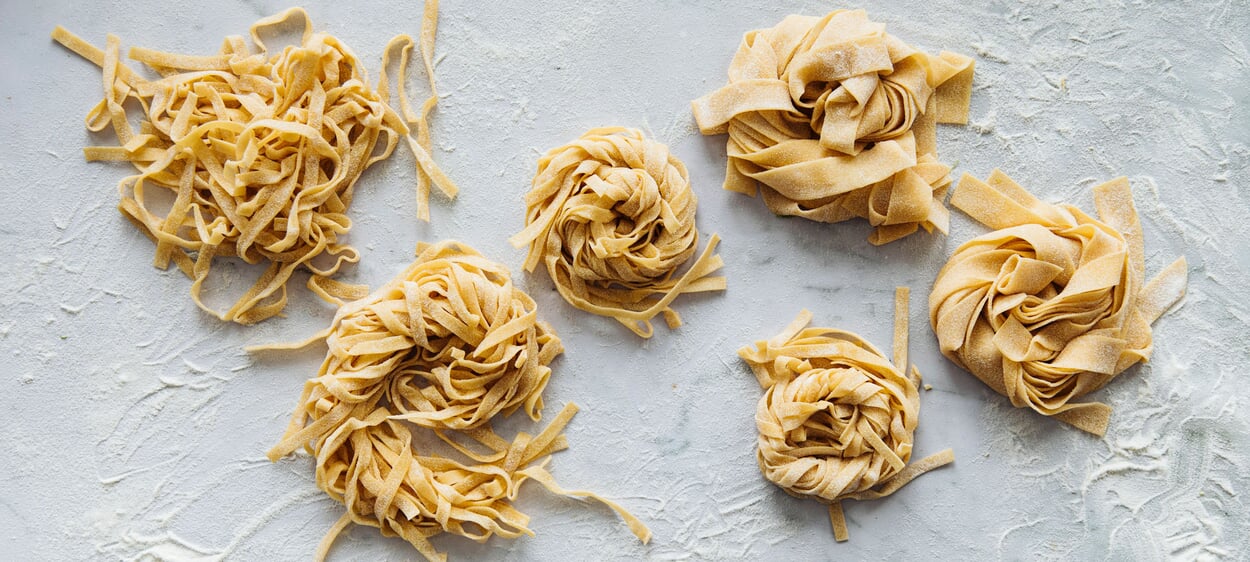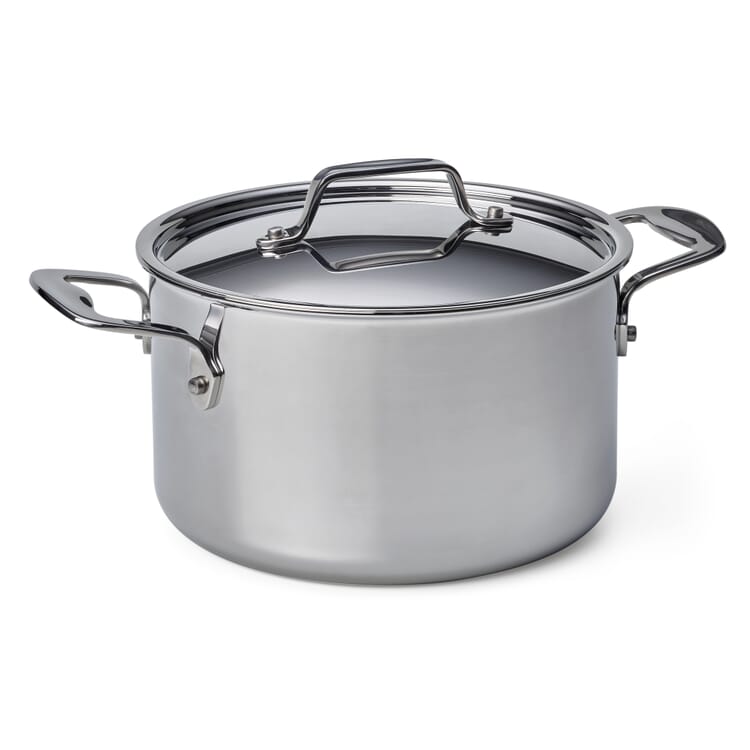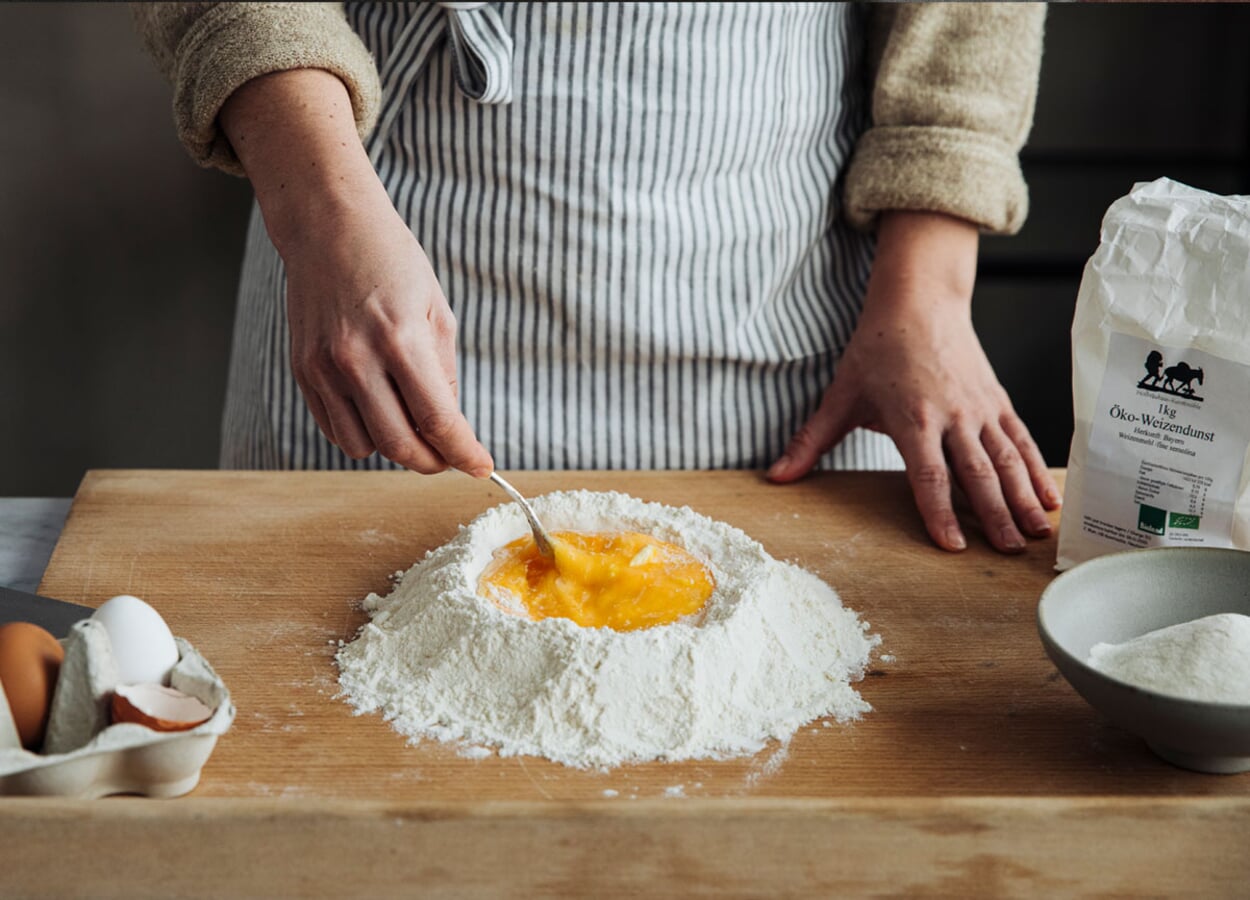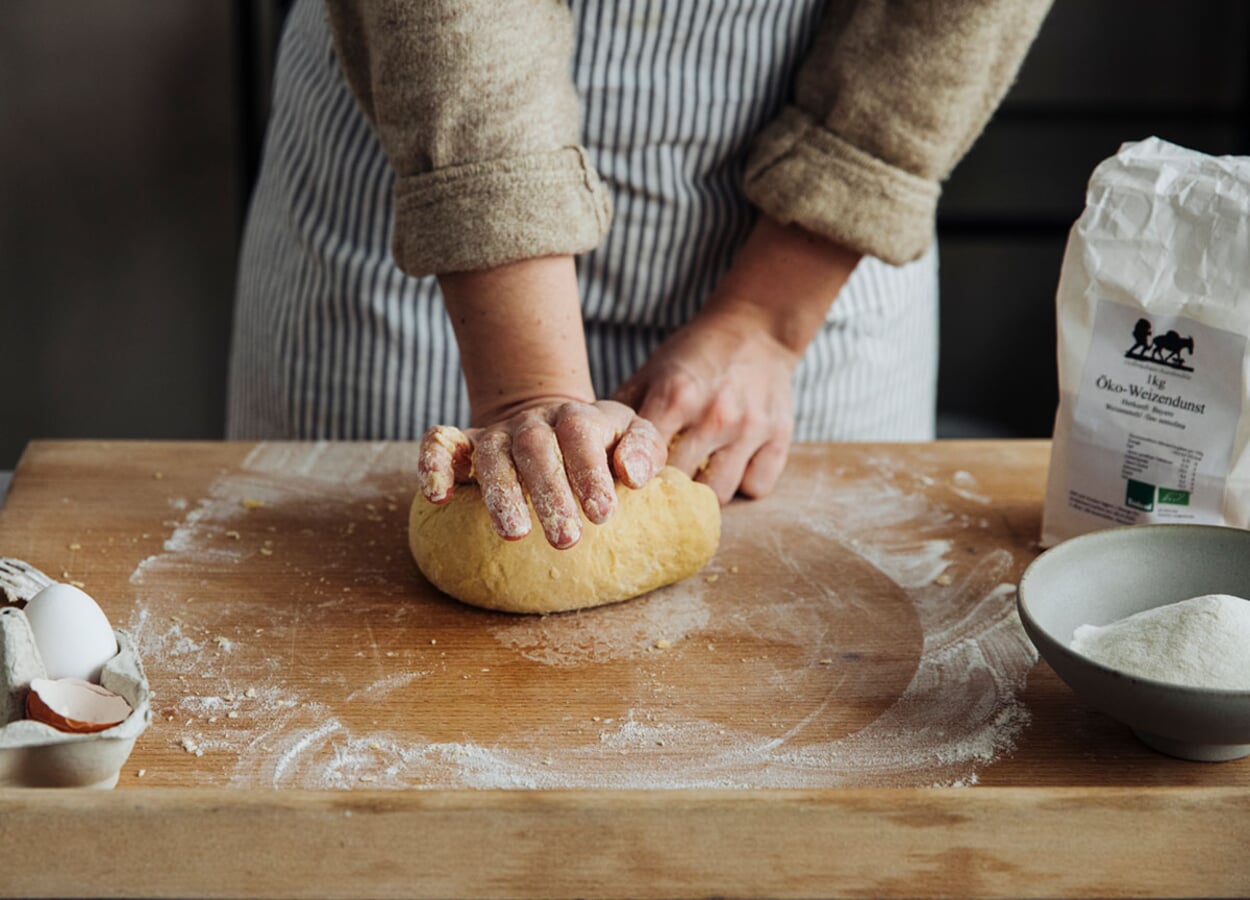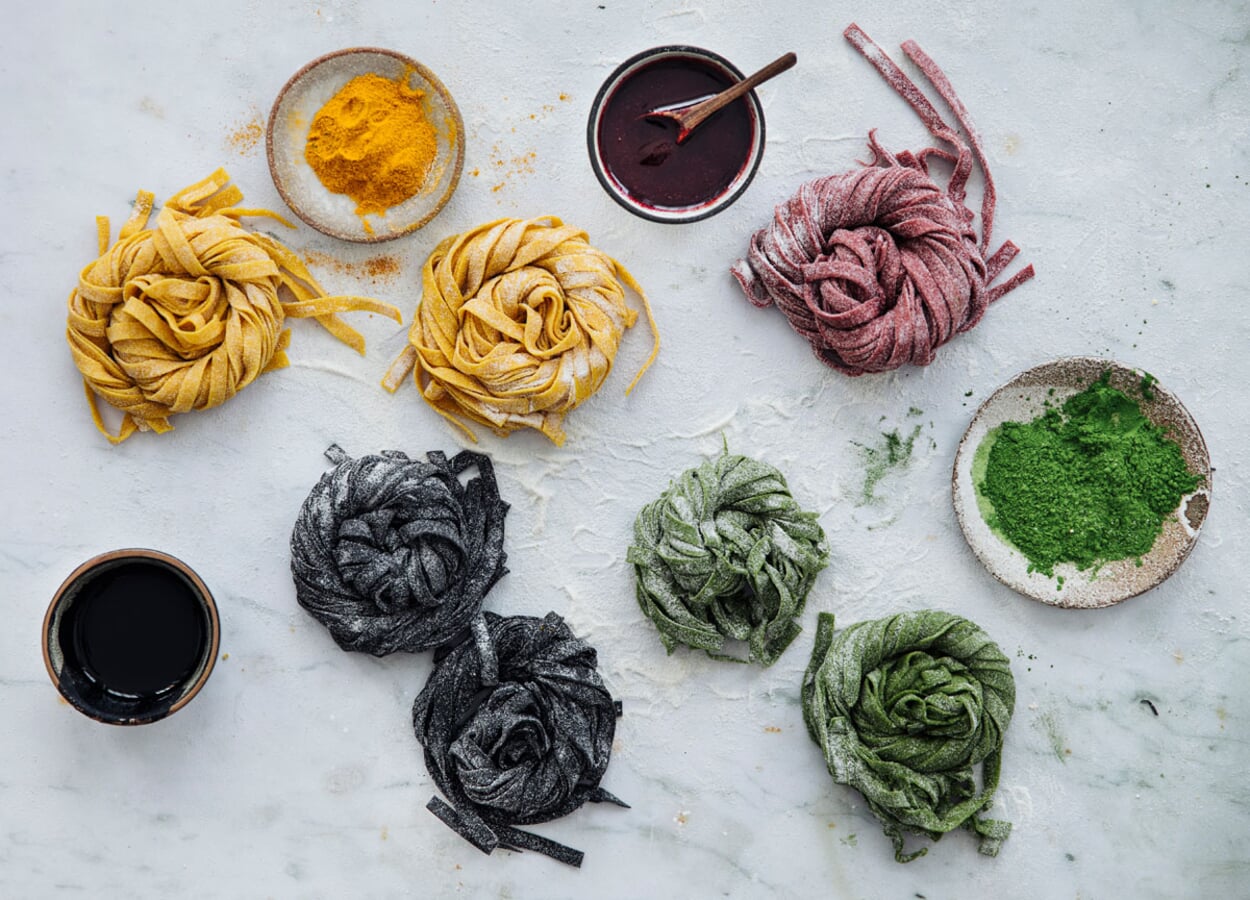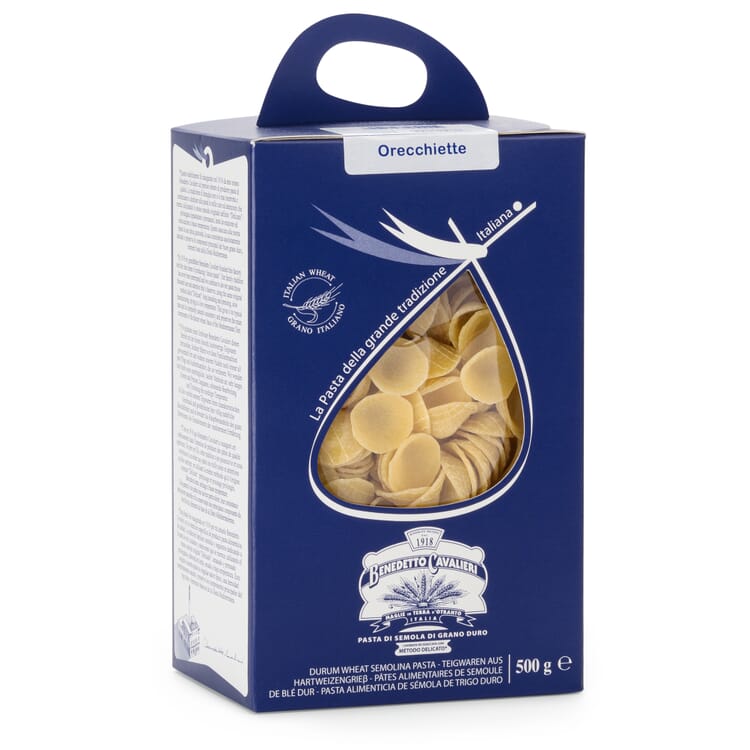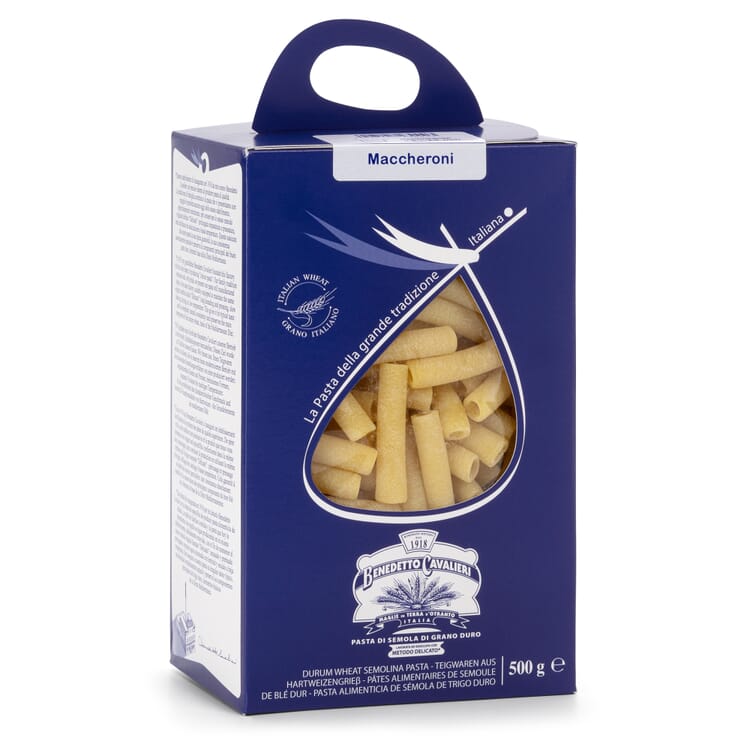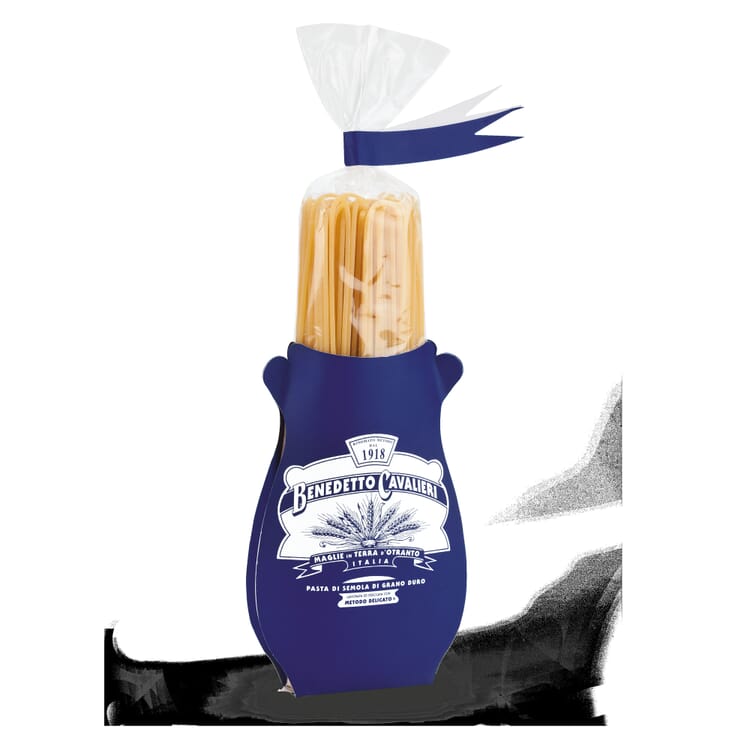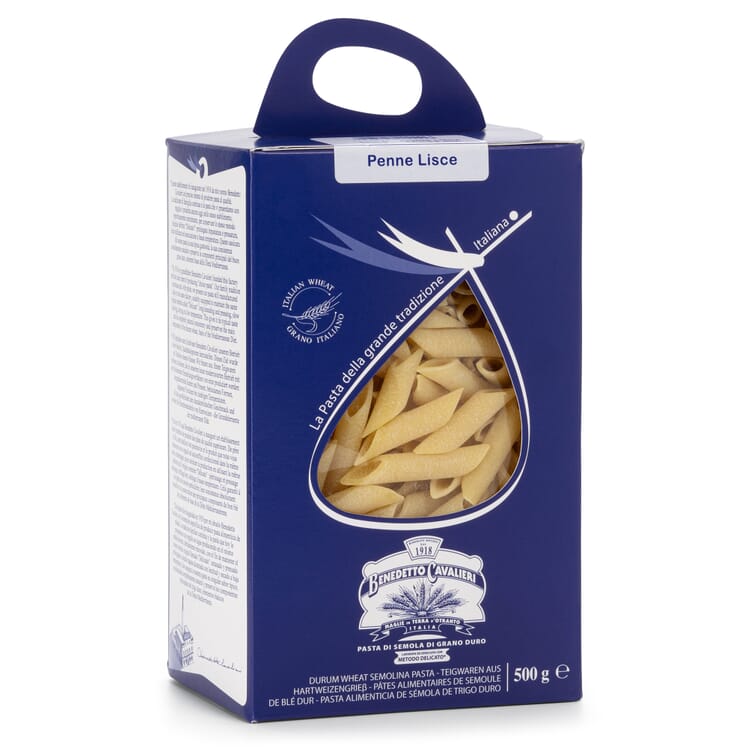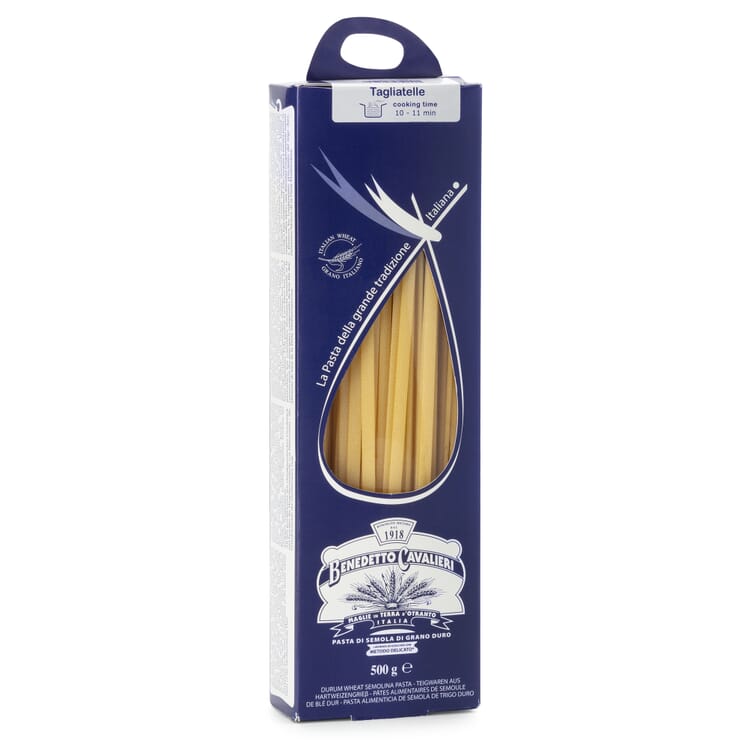Helpful tips
How to make Pasta
Fresh, homemade pasta is as good as a short vacation in Italy. Whether garganelli or tagliatelle, every Italian region cultivates its own specialties. In fact, there are hardly any limits to the variety of shapes. Whichever format you choose, preparing homemade pasta is much less complicated than you might think.
Pasta variety. From pappardelle to lasagna, from farfalle to maccheroni
The variety of pasta shapes and formats seems almost endless. To get a small overview for the beginning, the approximate classification is worthwhile in
- Ribbon pasta, for example Fettuccine, Linguine, Pici
- Round pasta shapes such as Pisarei, Gnocchetti Sardi, Orecchiette or Corzetti
- Short pasta shapes, for example the already mentioned Garganelli, Farfalle or Stricchetti
- Pasta packets, for example Ravioli, Tortellini or Cappelletti
- Pasta made from fine dough sheets, think of lasagna, cannelloni or the bauletti, an oven dish from the Marche region that is probably less well-known in Germany
If you have the appropriate tool at hand - a fine metal needle, simply called "ferro" in Italy, or alternatively knitting needles or shish kebabs - you can even make fusilli or maccheroni yourself with a little practice. Have we whetted your appetite for really delicious homemade pasta just like on vacation in Italy? We assure you: All you need for this pleasure is a little time, the appropriate ingredients and a few household tools.
The basis. The right flour
First of all, there is the basic ingredient: the flour. Wheat flour is the preferred flour for Italian pasta, and soft wheat varieties are used to make the fine "00" type flour, called "farina di grano tenero tipo 00". This flour has a high gluten content and is the closest to the 405-grit wheat flour we use (a little tip in case you can't get the Italian flour).
In comparison, "semola", the wheat semolina ground from durum wheat varieties, is much coarser and is available in two different forms: also finely ground or, alternatively, ground a little coarser. For starters, we recommend using finely ground durum wheat semolina, as this variety is somewhat easier to work with. Whether coarse or fine, the grainy consistency of durum wheat semolina ensures that pasta prepared from it can be cooked well "al dente", i.e. firm to the bite.
In some regions of Italy, pasta dough creations with chestnut, buckwheat or rye flour are also known. In Germany, rye flour is more typically used for baking bread, but in northern Trentino, for example, it is also used for "Kropfen," a type of large-format ravioli prepared with a filling of white cabbage, savoy cabbage, leeks and three different regional cheese specialties.
The dough. Egg or not egg - this is not a question
Or do you? You have the choice. "Pasta fresca all' uovo" contains egg, as the name suggests. When preparing the dough, you calculate about one egg per hundred grams of soft wheat flour (and about one hundred grams of flour per person). That's right: fresh pasta is made with 00 flour. Pasta dough with egg usually has a slightly softer, elastic consistency. Whether you need additional water also depends on the size of the eggs you use. The rule of thumb is: the larger, the less additional liquid you need to add when kneading. Our tip: If the dough feels dry when you knead it, just moistening the palms of your hands with a little water may be enough.
"Pasta secca," pasta made from durum wheat semolina, on the other hand, does not require an egg and usually contains only water. Do not add it cold, but rather lukewarm (not boiling, please), and proceed in portions, so do not add the whole amount foreseen in the recipe to the flour right at the beginning. This will prevent the dough from becoming too sticky. (However, even that would not be a drama: in that case, again, increase the amount of flour slightly - and wisely). Pasta dough made from durum wheat initially feels a bit more stubborn and firm under your hands than dough made with egg, but develops a smooth, silky-smooth surface and consistency through kneading.
A pinch of salt belongs in both types of dough. Olive oil is an optional ingredient, not a must, but adds a little extra flavor and smoothness to the dough. Expect kneading time of at least five minutes (for dough made with durum wheat flour) to ten minutes (for dough made with egg and soft wheat flour).
And this is how you proceed in making the dough:
- First, put the flour on the clean work surface and press a wide depression into it from above
- In this depression, beat the eggs or - depending on the type of dough - pour some water. Finally, add a pinch of salt
- In the next step, whisk the mixture with a fork, carefully working in the flour, starting from the inner edge of the well
- As soon as the dough begins to take shape and form, continue working with your hands, adding a little more liquid if necessary
- Knead the mixture vigorously with the heels of your hands. (To give you a little idea of this step: First press or push the mass away from you, then fold it again from the front and so on)
- Lastly, form a ball and cover it with a bowl or wrap it in beeswax cloth (or foil). The dough now needs a resting time of about 30 minutes at room temperature to relax
How to test if your pasta dough has reached the right consistency? Simply press in a small hollow with your thumb. If this hollow immediately relaxes, the dough has been sufficiently kneaded. If not, you should do some more work. One more tip if you want to produce your homemade pasta in stock. "Pasta secca" can be air-dried very well, while "pasta fresca" is better for freezing. To do this, spread the finished pasta on a tray or baking sheet, put it in the freezer for a few hours and then transfer it to freezer bags or containers.
Dye pasta
Green or orange, red, yellow, pink or even black ... We all know colorful pasta from the supermarket shelf. But how do these colors get into the dough? If you want your homemade pasta to be colorful too, here are some tips for you. You can make natural dyes for your pasta dough in two ways: either from spice or vegetable powder or from vegetable juice (alternatively vegetable puree).
For example
- Saffron or turmeric: yellow pasta
- Carrot juice or powder: orange pasta
- Tomato powder or pulp: red pasta
- Spinach powder or fresh, briefly blanched, thoroughly squeezed and pureed spinach: green pasta
- Beetroot juice or powder: pink pasta
- Sepia ink: black pasta
Likewise, you can add color and flavor with pesto or with fresh, finely chopped Mediterranean herbs.
If you want to use saffron or turmeric, it's best to soak the spices in some lukewarm water for about ten minutes beforehand and add them to the dough along with the soaking water. Speaking of liquid: With all this said, you should of course make sure that your pasta dough doesn't get too moist overall. If you are making egg-based dough, we advise whisking the eggs completely with the flour first and then incorporating the coloring ingredient in gulps or portions. For durum wheat dough, the amount of water added can be reduced accordingly.
Equipment. Rolling pin and pasta machine
And now, how does the transformation of the pasta dough ball into ribbon noodles, lasagna sheets, little butterflies, filled pasta and co. succeed?
That depends entirely. Our pasta machine will make the somewhat laborious work of rolling out dough easier for you. After all, the basis for many types of pasta is a sheet of dough - "la sfoglia" in Italian - about two to three millimeters "thick." In Italy, they say the dough sheet should end up being so paper-thin that it's translucent. (So if you can read your daily newspaper behind it, you've done everything right.)
But whether you use a pasta machine or a rolling pin ("matarello"): Make sure you always dust both your work surface and the utensils you use - i.e. the rollers of the machine or the wood - with a good pinch of flour. First divide your ball of dough into four pieces of roughly equal size and roll out one at a time evenly or crank it through the machine until the desired thickness is reached. While you're at it, it's best to store the pieces of dough that are still waiting to be rolled out under a slightly damp kitchen towel to prevent them from drying out.
Here's a tip if you're using a rolling pin: Keep pulling the ends of the dough sheet over the wood and smoothing it out with your palms toward the sides as you continue to roll vigorously. This will make the dough sheet nice and evenly thin. And remember to dust the finished rolled out "sfoglie" with a little flour as well and store under a kitchen towel, if necessary, so they don't stick together or dry prematurely. Ribbon pasta of varying widths (and lengths) can be cut either with the appropriate attachment on your pasta machine or with a sharp knife. The easiest way to do this is to roll the prepared sheets of dough back up into a strudel and divide it into appropriate strips. Lasagna or cannelloni sheets can also be cut to the required length and width with a knife. To make homemade ravioli, use our ravioli board or, if you don't have a ravioli cutter handy, use a glass or simple pastry cutter. (With filled pasta, always make sure to press the dough halves firmly together and carefully squeeze out any remaining air so that the halves don't fall apart during cooking).
For farfalle or stricchetti, cut your dough sheets into smaller pieces with a dough wheel or pizza cutter and fold them into butterflies or bows. Didn't we say it at the beginning? There are almost no limits to the variety of shapes you can make homemade pasta, either. For example, if you want to form gnocchetti or orecchiette, the popular ear-shaped pasta, start by dividing your pieces of dough into smaller portions and rolling them in turn into "sausages" about a centimeter thick, from which you divide small pieces, each about a centimeter wide.
Off to the pot. The cooking times in brief
When cooking your homemade pasta, calculate about one liter of water per hundred grams. In Italy, they don't skimp on the salt that you add to the boiling water. Fresh pasta usually doesn't take longer than three to five minutes to cook - durum wheat pasta, which may even have been pre-dried a bit, takes correspondingly longer. It is not easy to give exact cooking times. Just taste in between before you drain your pasta or lift it out of the pot with a slotted spoon. By the way, frozen pasta from your own supply does not need to thaw before cooking. Well then: buon appetito!
Our pasta assortment
And if it has to go fast, you will certainly find the right pasta in our pasta assortment:

